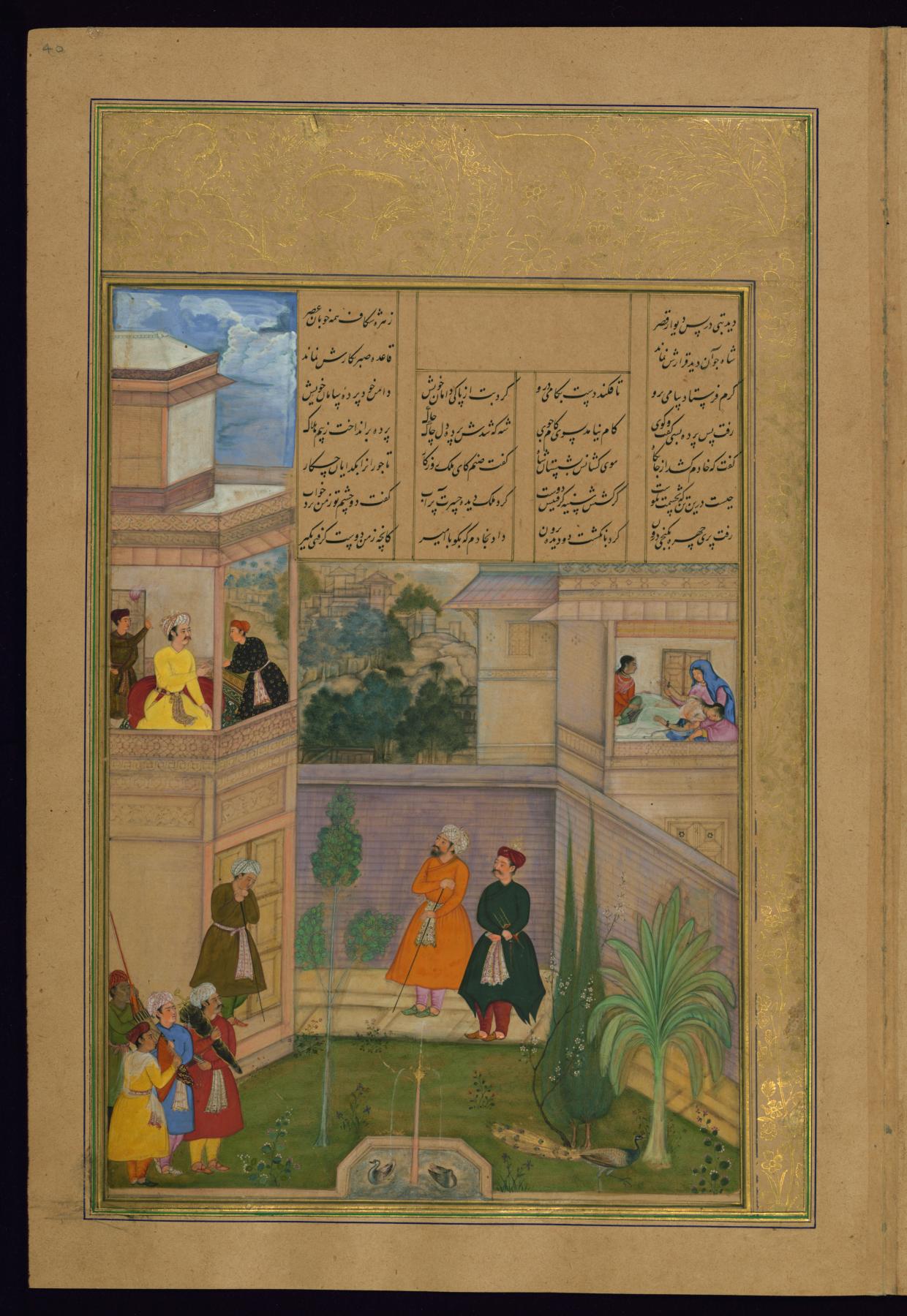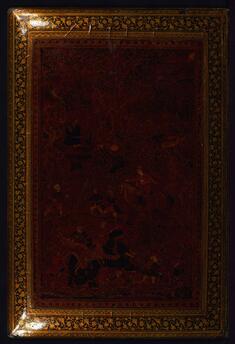A Virtuous Woman Placates the King by Plucking Out Her Eyes
This illustration from Walters manuscript W.624 depicts the 20th maqala (discourse), which emphasizes female virtue. The king relentlessly pursues the female protagonist, claiming that he cannot resist her beautiful eyes. To escape his amorous advances, the woman plucks out her eyes and sends them to him. She thus chooses virtue over all else, even her ability to see.
Provenance
Provenance (from the French provenir, 'to come from/forth') is the chronology of the ownership, custody, or location of a historical object. Learn more about provenance at the Walters.
Muhammad Zaki, 1241 AH/AD 1825-1826 [mode of acquisition unknown] [oval seal, fols. 1a, 211a]; 'abd al-raji Muhammad Shafi', 1247 AH/AD 1831-1832 [mode of acquisition unknown] [rectangular seal fols. 1a, 211a]; Muhammad 'Ali [date and mode of acquisition unknown] [large oval seal with no date on fol. 211a]; Henry Walters, Baltimore [date and mode of acquisition unknown]; Walters Art Museum, 1931, by bequest.
Exhibitions
| 2005-2006 | Pearls of the Parrot of India: The Emperor Akbar's Illustrated "Khamsa," 1597-1598. The Walters Art Museum, Baltimore; The Metropolitan Museum of Art, New York. |
Geographies
Pakistan, Lahore (Place of Origin)
Measurements
H: 11 1/4 x W: 7 1/2 in. (28.5 x 19 cm)
Credit Line
Acquired by Henry Walters
Location in Museum
Not on view
Accession Number
In libraries, galleries, museums, and archives, an accession number is a unique identifier assigned to each object in the collection.
In libraries, galleries, museums, and archives, an accession number is a unique identifier assigned to each object in the collection.
W.624.40A




